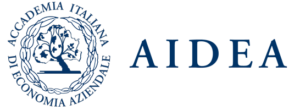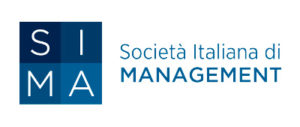Research
Fifth Digital Transformation Conference “Digital Spaces: Firms, Platforms, Ecosystems, and Industries”, University of Trento, 9-10 February 2023




FIFTH DIGITAL TRANSFORMATION CONFERENCE
CALL FOR PAPERS
Digital Spaces: Firms, Platforms, Ecosystems, and Industries
University of Trento
Department of Economics and Management
Via Inama 5 – 38122 Trento
9th and 10th February 2023
Submission Deadline: 16 January 2023
Email your contribution to:
digitaltran@lumsa.it
Both full papers (in the range of 6,000-10,000 words) and
extended abstracts (in the range of 3,000-3,500 words) are welcome
Only full articles are eligible for the Best Paper Award
Organizing Committee
Andrea Caputo, University of Trento
Giovanni Battista Dagnino, University of Rome LUMSA
Alberto Nucciarelli, University of Trento
Erica Santini, University of Trento
Scientific Committee
Paolo Aversa, Bayes Business School, City University of London
Francesca Cabiddu, University of Cagliari
Sandro Castaldo, Bocconi University
Ignacio Danvila-del-Valle, Complutense University of Madrid
Maria Della Lucia, University of Trento
Alfredo De Massis, Free University of Bolzano/Bozen
Stefano Denicolai, University of Pavia
Angelo Digregorio, University of Milano Bicocca
Sascha Kraus, Free University of Bolzano/Bozen
Cristina Mele, University of Naples Federico II
Arabella Mocciaro Li Destri, University of Palermo
Alessandro Narduzzo, Free University of Bolzano/Bozen
Michele Pizzo, University of Campania Vanvitelli
Daniel Palacios-Marqués, University of Valencia
Alberto Pastore, Sapienza University of Rome
Riccardo Resciniti, Università del Sannio
Sandro Trento, University of Trento
Annalisa Tunisini, Catholic University of the Sacred Hearth Milan
Antonella Zucchella, University of Pavia
Conference theme
Taylor and Spicer (2007) defined organisationalspace as “the locus where the organisation “happens” and where external and internal agents often interact to engage with the scope of the organisation itself”. The theoretical development of the organisational space also emphasised its role as “an enabler of the firm’s activities and innovation processes” considering the potential impact on firms’ scope and activities (Taylor and Spicer, 2007).
Management scholars have recently focused on space and expanded research across different domains. In particular, considering the impact of computer-mediated communication (CMC) on organisational activities, studies have theorised the expansion of spaces from a physical dimension to a digital one. In the physical domain, they have enriched our understanding of the systemic structures, e.g., institutional and cognitive, opening up to the analysis of the emergence of new industries and the heterogeneity of legitimization trajectories (Giarratana, 2004; Furnari, 2014; Gong et al., 2022; Aversa et al., 2022). In this regard, complementarities and interdependencies between both economic and non-economic actors play a central role; and scholars have widely investigated the organisational strategies implemented by a focal firm in a business ecosystem (Adner and Kapoor, 2010; Adner et al., 2019; Cozzolino et al., 2021). In the digital domain, research has focused on the human side of interacting with digital machines (e.g., Aversa et al., 2021), the geographical meaning of digital spaces (e.g., November et al., 2010), and the environment where digital platforms create conditions for diverse stakeholders to interact (Parker et al., 2021; Sutherland and Jarrahi, 2018; Zhu, 2019). Digital transformation shapes indeed the way interaction, innovation and entrepreneurship emerge and evolve (Nambisan, 2017; Sahut et al., 2021). For instance, Web 2.0 platforms have modified the spatial affordances of physical spaces through online communities (Graham and Zook, 2013). In this regard, studies have assessed how digital affordances and digitalization combine with spatial affordances to influence the structure, institutional arrangements, and the dynamics of physical spaces where innovation and entrepreneurship emerge (Autio et al., 2018; Corradini et al., 2022; Rocha et al., 2021). Here, the digital space might reflect the intangible assets or image of physical spaces, expanding on the assigned meanings (Boisen et al., 2018).
The growing interest around the various facets of the construct of space calls for both fresh theoretical and practitioner-oriented research that advances our understanding of how digital technologies influence firms’ organisational space, defining challenges, triggering necessary changes for managers, fostering the development of heterogeneous competitive spaces, leading to the innovation of traditional business models, and contributing to the emergence of new industries. We encourage submissions of papers aiming to contribute to a wide range of topics such as (but not limited to):
- Positioning and evolutionary perspectives in the formation of digital strategy
- Strategy formulation and execution in the digital space
- Business model innovation and incumbents’ strategy renewal in the digital space
- The competitive dynamics in the platform logic
- Economics, organisational and strategic analysis of platform leadership
- Complementarities and interdependencies in the emergence of ecosystems
- Innovation and business ecosystems: what’s next?
- From geographical clusters to digital ecosystems
- Industrial strategies to boost economic growth and competitiveness
- Conceptualising spaces in firms’ organisational structures
- The challenges of digital spaces for non-profit and cultural organisations
- The challenges of digital spaces for marketing, branding, advertising, and sales
- The implications of digital spaces experience to marketing theory, tools, and applications
- International market entry, firm internationalisation and digital spaces
- Distribution and communication issues in digital spaces and ecosystems
- Branding strategies and hybrid spaces.
- Omnichannel revolution in retail and digital spaces: characteristics, challenges and prospects
- Customer experience, customer identity and digital spaces
We kindly invite scholars from various research domains (e.g., strategy, entrepreneurship, innovation and technology management, organisational behaviour, managerial engineering, supply chain management, distribution, and marketing) to submit their research proposals. The event is designed to promote and foster the development of multidisciplinary experiences.
References
Adner, R., & Kapoor, R. (2010). Value creation in innovation ecosystems: How the structure of technological interdependence affects firm performance in new technology generations. Strategic Management Journal, 31(3), 306-333.
Adner, R., Puranam, P., & Zhu, F. (2019). What is different about digital strategy? From quantitative to qualitative change. Strategy Science, 4(4), 253-261.
Aversa, P. Bianchi, E., Gaio, L., & Nucciarelli, A. (2022), The Grand Tour: The Role of Catalyzing Places for Industry Emergence. Academy of Management Journal, 65(6), 1-34.
Aversa, P., Formentini, M., Iubatti, D., & Lorenzoni, G. (2021). Digital machines, space, and time: Towards a behavioural perspective of flexible manufacturing. Journal of Product Innovation Management, 38(1), 114-141.
Boisen, M., Terlouw, K., Groote, P., & Couwenberg, O. (2018). Reframing place promotion, place marketing, and place branding-moving beyond conceptual confusion. Cities, 80, 4-11.
Corradini, C., Folmer, E., & Rebmann, A. (2022). Listening to the buzz: Exploring the link between firm creation and regional innovative atmosphere as reflected by social media. Environment and Planning A: Economy and Space, 54(2), 347-369.
Cozzolino, A., Corbo, L., & Aversa, P. (2021). Digital platform-based ecosystems: The evolution of collaboration and competition between incumbent producers and entrant platforms. Journal of Business Research, 126, 385-400.
Furnari, S. (2014). Interstitial spaces: Microinteraction settings and the genesis of new practices between institutional fields. Academy of Management Review, 39(4), 439-462.
Giarratana, M.S. (2004). The birth of a new industry: entry by start-ups and the drivers of firm growth – the case of encryption software. Research Policy, 33, pp. 787–806
Gong, H., Binz, C., Hassink, R., & Trippl, M. (2022). Emerging industries: institutions, legitimacy and system-level agency. Regional Studies, 56(4), 523-535.
Parker, G., Petropoulos, G., & Van Alstyne, M. (2021). Platform mergers and antitrust. Industrial and Corporate Change, 30(5), 1307-1336.
Sutherland, W., & Jarrahi, M. H. (2018). The sharing economy and digital platforms: A review and research agenda. International Journal of Information Management, 43, 328-341.
Taylor, S., & Spicer, A. (2007). Time for space: A narrative review of research on organisational spaces. International Journal of Management Reviews, 9(4), 325-346.
Zhu, F. (2019). Friends or foes? Examining platform owners’ entry into complementors’ spaces. Journal of Economics & Management Strategy, 28(1), 23-28.
The Conference is organised in three macro-tracks:
- Firms;
- Platforms and ecosystems;
Please, indicate the track that fits the most with your submission to allow for a quicker allocation of your manuscript to reviewers and facilitate the design of the final program.
The intention of the Organizing Committee is to grant conference attendees an on-site experience.
Publication opportunities and Awards
- The Organizing Committee is working to announce Special Issues in ANVUR “A class” international journals as hosts of selected papers presented in Trento. News will be announced in due times and full details will be provided during the event.
- Opportunity to receive feedback for participants interested to submit their work to the Special Issue of Management Decision (ANVUR A) “Talent attraction and retention strategies in the post-covid era” (Guest Editors: Sascha Kraus, Andrea Caputo, Daniel Palacios-Marqués, Ignacio Danvila-del-Valle)
- Three selected contributions will likely be invited for publication in the magazine Wired. The goal is to give visibility, outside of the scientific community, to the best outcomes of the conference with managerial flavour.
- A best paper award will be granted by a committee of both scholars and practitioners. A Conference Best Paper Award will be awarded during the event.
Venue and hospitality
The conference will take place at the Department of Economics and Management of the University of Trento, Italy.
A list of accommodations offering special rates will be available on the conference webpage.
Roadmap and deadlines
| Steps | Date/Deadlines | Details |
| Papers and abstracts submission | 16th January, 2023 | Contributions must be sent to this email account: digitaltran@lumsa.it
Both full papers (in the range of 6,000-10,000 words) and extended abstract (in the range of 3,000-3,500 words) are welcomed. Full articles only are eligible for the Best Paper Award.
The following submission guidelines apply: – A Cover page with Authors’ details and details of the Corresponding Author; – Both full papers and extended abstracts should include: Abstract, Introduction, Theoretical framework, Methodology, Results/Findings, Discussion, Managerial contribution, and Conclusions; – References in APA style – Files should have either the .pdf or the .doc extension |
| Notification of paper acceptance | 23rd January, 2023 | Authors whose papers have been accepted for presentation at the conference will be notified by January 15th 2023.
Evaluation criteria: ● Theoretical contribution; ● Managerial contribution/implications for policy makers; ● Soundness of the methodology; ● Consistency with the conference theme. |
| Conference Registration | 27th January, 2023 | To register for the Conference all the attendees have to:
1) Register at SIMA-Società Italiana di Management, by paying a fee of: – Euros 195,00 for registrations completed by 27th January. – Euros 225,00 for registrations completed by 3rd February. – Euros 275 for registrations from 4th Februaryonwards. The Organizing Committee cannot grant any extension deadlines for fee payment.
Payments should be done in favour of: Società Italiana di Management Unicredit, Agenzia 149 IBAN: IT 10 S 02008 05089 000103056784 Reason for payment (Causale): Name and Family name, DIGITAL Conference Trento
|
| Conference dates | February 9-10, 2023 Trento |
● DAY1 (Thursday, February 9, 2023): 3pm-6.30pm.
– Social dinner at 7.30pm – Venue to-be-announced ● DAY2 (Friday, February 10February 2023):9:00am to 1pm. |
Looking forward to seeing you in Trento on Thursday, February 9th 2023.
The Organising Committee
How to get to Trento
By car
Trento is along the A22, the Italian highway connecting Verona to the Brenner Pass. Three exits allow travellers entering Trento: Trento Nord (North), Trento Centro (Center), and Trento Sud (South). Who drive from Munich can either drive along the E45 towards Innsbruck and proceed south towards the Brenner Pass or along the A95 and switch to the E45 in the Innsbruck area.
Distances/duration (conservative)
– From North:
Innsbruck and Innsbruck airport: 180 km – 2 hours
Munich: 330 km – 3 hours 40 mins
Munich airport: 350 – 4 hours
Nuremberg: 500 km – 5 hours
Frankfurt: 690 km – 8 hours
Vienna: 650 km – 7 hours
– From South:
Verona and Verona airport: 100 km – 1 hour 10 mins
Florence: 320 km – 3 hours 15 mins
Rome city centre: 590 km – 6 hours 45 mins
Rome Fiumicino international airport: 615 km – 6 hours
– From East:
Venice: 215 km – 2 hours 15 mins
Venice Marco Polo international airport: 220 – 2 hours 20 mins
– From West:
Milan city centre: 220 km – 2 hours 45 mins
Milan Linate international airport: 213 km – 2 hours 15 mins
Milan Malpensa international airport: 265 km – 3 hours
Bergamo Orio al Serio (for Ryanair flyers): 180 km – 2 hours
By train
Find your suitable train schedule here:
http://www.trenitalia.com/tcom-en
http://www.obb-italia.com/de/index.jspfor trains travelling from Austria
http://www.deutschebahn.com/de/start/ for trains travelling from Germany
Intercity trains: Munich-Innsbruck-Brener-Bolzano-Trento-Verona-Bologna
High speed trains: Turin-Milan-Verona (at Verona Porta Nuova station to change for Regional or Intercity trains direction Brenner Pass)
High speed trains: Venice-Padova-Verona (at Verona Porta Nuova station to change for Regional or Intercity trains direction Brenner Pass)
Ticket costs
- Regional train from Verona to Trento (8 euros) – 1 hour 10 mins travelling time
- Intercity trains from Verona to Trento (between 10 and 25 euros) 45 minutes travelling time
- High-speed trains from Milan or Venice to Verona: between 20 and 35 euros.
By plane
From Verona Catullo airport
By public transport – Public bus service (every 15 minutes – 6 euros) to the train station and from there train connection direction north (towards Bolzano or Brenner – about 1 hour 10 mins – 8 to 20 euros)
By taxi – 150 euros (estimated)
From Innsbruck airport
By public transport – Public bus service (every 20 minutes – 10 euros) to the train station and from there train connection direction south (towards Brenner/Verona/Bologna – about 3 hours – 25/35 euros)
From Munich airport
By public transport – Public bus service or train (every 15/20 minutes) to the train station and from there train connection direction south (towards Innsbruck/Brenner/Verona/Bologna – about 4 hours 30 mins – 50/70 euros)
From Milan airports
By public/private bus services to Milan Central Station (Malpensa is about 1 hour, Linate is about 40 minutes away). Milan Malpensa is connected to Milan Central Station by regional train (1 hour travelling time).
From Milan-Bergamo Orio al Serio airport
Flixbus (www.flixbus.com) connection to Trento (3 hours – 12 euros)
Train or bus connection to Milan central station (1 hour) and then by train to Trento via Verona Central Station.
From Venice Marco Polo airport
Bus or taxi connection to Venice Central station and then by train to Trento via Verona Central Station.

